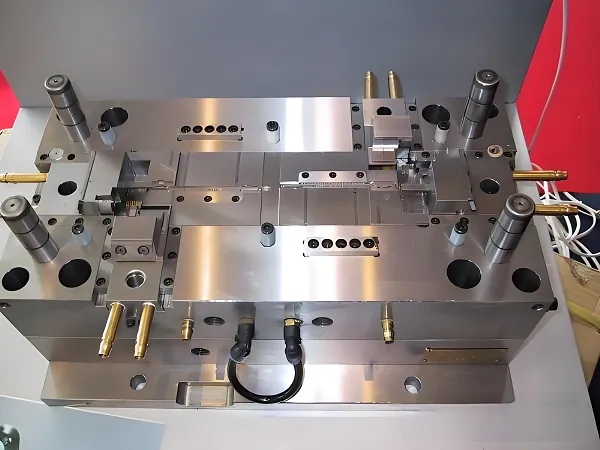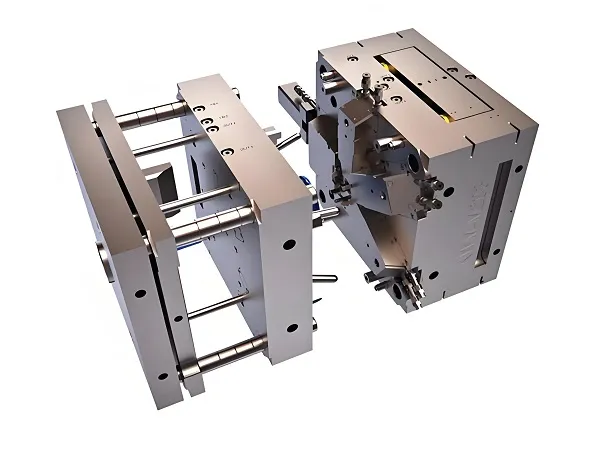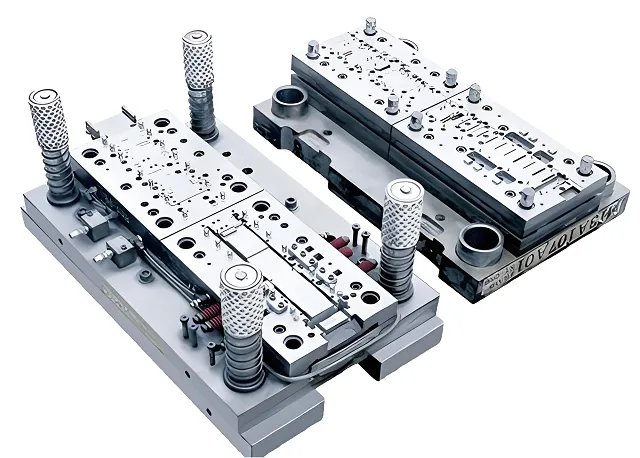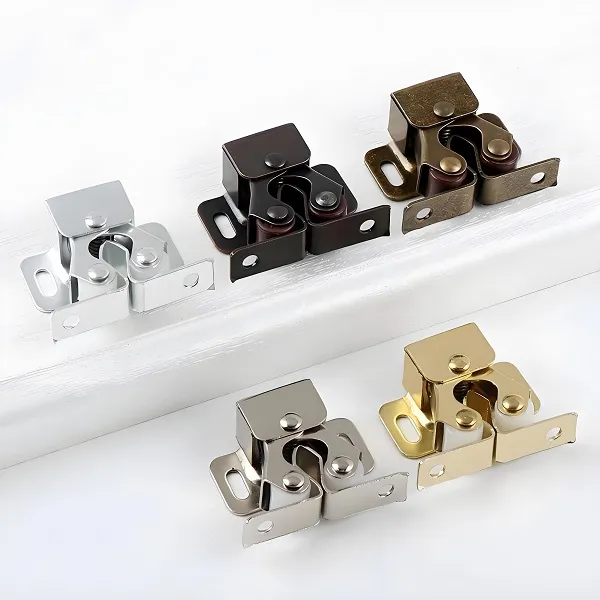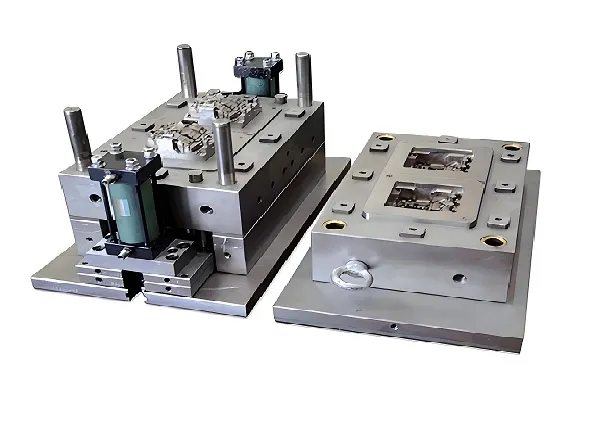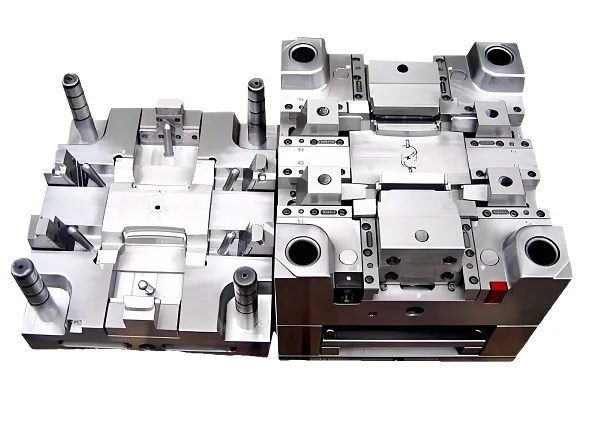In fields such as high – end equipment manufacturing, aerospace, and medical devices, the precision of components directly determines the performance and reliability of products. Precision CNC machining services, with data – driven precise processes, ultra – precision equipment, and full – process quality control, achieve a leap from “millimeter – level processing” to “micron – level intelligent manufacturing”.
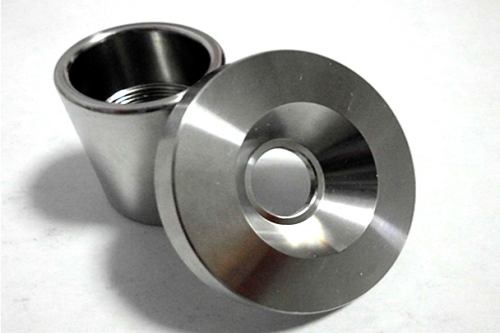
I. Why is Traditional Machining Difficult to Meet the Needs of Precision Manufacturing?
Q&A: What are the core advantages of precision CNC machining services?
Traditional machining has three core pain points when dealing with precision components (with a precision requirement of within ±0.01mm):
Traditional machining has three core pain points when dealing with precision components (with a precision requirement of within ±0.01mm):
- Difficulty in breaking through the precision limit: The positioning accuracy of ordinary machine tools is only ±0.05mm, and human – operation errors are large. Facing micron – level tolerances (such as the tolerance of aerospace engine blades being ±0.003mm), the scrap rate is as high as 25% – 30%, which cannot meet the needs of high – end manufacturing.
- Bottlenecks in processing complex structures: When processing precision features such as deep – cavity thin – walls (wall thickness ≤ 0.3mm) and micro – structures (aperture ≤ 0.1mm), traditional cutting tools are prone to wear and cause large vibrations, resulting in excessive surface roughness (Ra > 1.6μm). Repeated mold repairs are required, and the production cycle is extended by more than 50%.
- Poor adaptability to material processing: For difficult – to – machine materials such as titanium alloys and nickel – based superalloys, it is difficult to precisely control the cutting parameters of traditional processes. Significant thermal deformation of the material occurs, and the dimensional deviation after processing exceeds ±0.02mm, increasing the material loss rate by 40% – 50%.
However, precision CNC machining services take “nanometer – level precision, zero – defect manufacturing” as the core:
- Full – process precision control:
- Micron – level dimensional assurance: Ultra – precision CNC machine tools (positioning accuracy ±0.001mm, repeat positioning accuracy ±0.0005mm) are used, combined with on – line laser interferometer compensation technology. The key – dimension tolerance of parts is controlled within ±0.003mm, and the surface roughness Ra ≤ 0.4μm, meeting the strict requirements of fields such as semiconductors and optical lenses.
- Process stability optimization: Finite – element simulation (FEA) is used to analyze cutting stress and thermal deformation, and tool paths and cooling strategies are optimized. The deformation of parts during processing is less than 0.002mm, and the qualified rate is increased from 75% to 98%.
- Data – driven agile manufacturing: Based on the customer’s 3D model data, digital – twin technology is used to simulate the entire machining process, quickly verify the process feasibility, shorten the cycle from drawing to the delivery of the first piece by 60%, and at the same time reduce the trial – and – error cost by 35%.
II. How Does the Core Process of Precision CNC Machining Achieve Precision Breakthroughs?
- Ultra – precision machining equipment and tools
- Nanometer – level machining machine tools: Five – axis 联动 ultra – precision machining centers (spindle radial run – out ≤ 0.0003mm) and slow – wire – cutting electrical discharge machining machine tools (electrode wire wear < 0.001mm) are equipped. Air – floating guides and hydrostatic bearings are used to reduce mechanical vibrations and achieve nanometer – level cutting (minimum cutting depth 0.1μm).
- Cutting – edge tool technologies: Diamond – coated tools (coating thickness 0.5 – 1μm) and CBN super – hard tools are used. The edge radius (minimum 0.01mm) and rake and clearance angle parameters are optimized for different materials. The cutting force is reduced by 30%, and the tool life is extended to more than 15 hours, suitable for processing hard – brittle materials such as optical glass and ceramics.
- Intelligent fixture systems: Vacuum – adsorption fixtures (vacuum degree ≥ – 95kPa) and thermal – expansion fixtures are developed. Micron – level clamping and positioning are achieved through the principle of thermal expansion and contraction. For thin – wall parts, an elastic support structure is used to control the clamping deformation within 0.001mm.
- Digital precision machining processes
- Micro – milling and micro – machining: For small parts (size < 5mm) and micro – structures (groove width 0.05mm, depth – to – width ratio 10:1), micro – milling technology (spindle speed 100,000rpm) is used, combined with a microscopic vision system and a servo motor with nanometer – level resolution, to achieve sub – micron – level machining accuracy, meeting the needs of MEMS sensors and precision mold inserts.
- Integrated grinding and polishing: Magnetic – rheological finishing (MRF) and ion – beam etching (IBE) technologies are used. By controlling the rheological properties of the polishing fluid and the energy of the ion beam, the peak – to – valley (PV) value of the surface form error of optical lenses is controlled within λ/10 (λ = 632.8nm), and the surface roughness Ra < 0.01μm.
- Cryogenic minimum – quantity lubrication machining: When processing materials such as titanium alloys and magnesium alloys, a combination of – 20℃ cryogenic cold air (flow rate 15L/min) and minimum – quantity lubricating oil (0.05ml/min) is used for compound cooling. This suppresses material deformation caused by cutting heat, reduces tool wear, and reduces the residual stress on the machined surface by 60%.
- Intelligent machining control systems
- Digital – twin pre – research: Software such as ANSYS and UG NX is used to establish a digital – twin model of the part, simulate the stress, strain, and temperature – field distribution during cutting, optimize the tool path and cutting parameters, and eliminate more than 85% of potential machining errors in advance.
- Real – time closed – loop control: The machine tool is equipped with a nanometer – level grating scale (resolution 0.0001mm) and an acceleration sensor to real – time collect position and vibration data. The AI algorithm automatically compensates for thermal deformation (compensation accuracy 0.0005mm) and tool wear (compensation amount 0.001mm) to ensure a stable machining process.
- Cloud – based quality traceability: All machining data (process parameters, inspection reports, equipment status) are real – time uploaded to the cloud. Customers can view the machining progress and quality data through an exclusive platform, realizing the full – life – cycle traceability from raw materials to finished products.
III. Quality Control: Stringent Verification throughout the Chain from Micron to Nanometer Levels
- Ultra – precision inspection systems
- Nanometer – level dimensional measurement: A coordinate – measuring machine (resolution 0.001μm) and an atomic – force microscope (AFM, resolution 0.1nm) are used to detect the key dimensions and geometric tolerances of parts (roundness ≤ 0.002μm, flatness ≤ 0.003μm). For small apertures, CT scanning (resolution 1μm) is used for three – dimensional detection.
- Surface – quality analysis: A white – light interferometer (vertical resolution 0.1nm) is used to measure the surface roughness and micro – topography, and an X – ray photoelectron spectrometer (XPS) is used to analyze the surface element composition and oxide – layer thickness to ensure that the surface quality meets the design requirements.
- Functional performance testing: Dynamic – balance testing (unbalance amount < 0.5g·mm/kg) and sealing – performance testing (leakage rate < 1×10⁻⁶ Pa·m³/s) are carried out on precision moving parts. For optical parts, surface – form accuracy inspection (number of interference fringes ≤ 1) is carried out to verify the actual performance.
- Intelligent defect – prevention mechanisms
- First – piece fifteen – inspection system: A professional team composed of process engineers and quality engineers strictly inspects 50 indicators of the first – piece part, such as material batch, tool parameters, and machining dimensions. An electron microscope (1000 – times magnification) is used to detect micro – defects to ensure zero – error production start.
- Real – time process monitoring: Acoustic – emission sensors (frequency range 100 – 1000kHz) are used to monitor abnormalities such as tool breakage and cutting chatter. Once a sudden change in the signal is detected, the system automatically stops and alarms within 0.1 seconds to prevent batch non – conformities.
IV. How Does Precision Machining Balance High Precision and Economy?
Q&A: Does nanometer – level precision necessarily come with high costs?
Through three innovative models, precision CNC machining achieves a 30% – 40% cost reduction and a 40% efficiency increase:
Through three innovative models, precision CNC machining achieves a 30% – 40% cost reduction and a 40% efficiency increase:
- Intelligent tool – life management: A tool – health monitoring system is deployed. Tool life is predicted through cutting – force spectrum analysis (error < 3%), and automatic tool – change reminders are given, reducing downtime by 25% and tool costs by 40%.
- Process integration optimization: Multiple processes such as turning, milling, grinding, and polishing are integrated in a compound machining center, reducing the number of clamping times, increasing processing efficiency by 40%, and at the same time reducing equipment investment and floor – space occupation costs.
- Digital – twin cost reduction: The digital – twin model replaces 3 – 4 physical trial – cuts, saving 35% of material – loss costs, shortening the R & D cycle by 15 – 20 days, and quickly responding to market demands.
V. Core Considerations for Choosing Precision CNC Machining Services
- Equipment and technical barriers: The supplier should have ultra – precision machining machine tools, nanometer – level inspection equipment, and core processes such as micro – milling and magnetic – rheological polishing to ensure that micron/nanometer – level processing requirements are met.
- Industry – certification qualifications: Have certifications such as ISO 9001, AS9100D (aerospace), and ISO 13485 (medical devices), as well as CNAS – accredited inspection reports to ensure that products meet international standards.
- Digital service capabilities: Have digital tools such as digital – twin, AI process optimization, and cloud – based traceability to achieve transparent and intelligent management of the entire process, ensuring processing quality and delivery cycle.
Conclusion
Precision CNC machining services, driven by technological innovation and data intelligence, break through the precision boundaries of traditional machining and provide extremely precise component solutions for high – end manufacturing fields such as aerospace, medical devices, and semiconductors. In the wave of the transformation of the manufacturing industry towards “precision and intelligence”, machining services with “ultra – precision equipment + digital – twin processes + nanometer – level quality control” are becoming the core competitiveness for enterprises to break through technical bottlenecks and seize market heights. From the precision blades of aerospace engines to the optical components of lithography machines, precision CNC machining services will continue to help China’s manufacturing upgrade to China’s “intelligent” manufacturing with nanometer – level precision and zero – defect quality.
(Contact us immediately to obtain a customized precision CNC machining solution and a free nanometer – level precision inspection service)
(Contact us immediately to obtain a customized precision CNC machining solution and a free nanometer – level precision inspection service)

